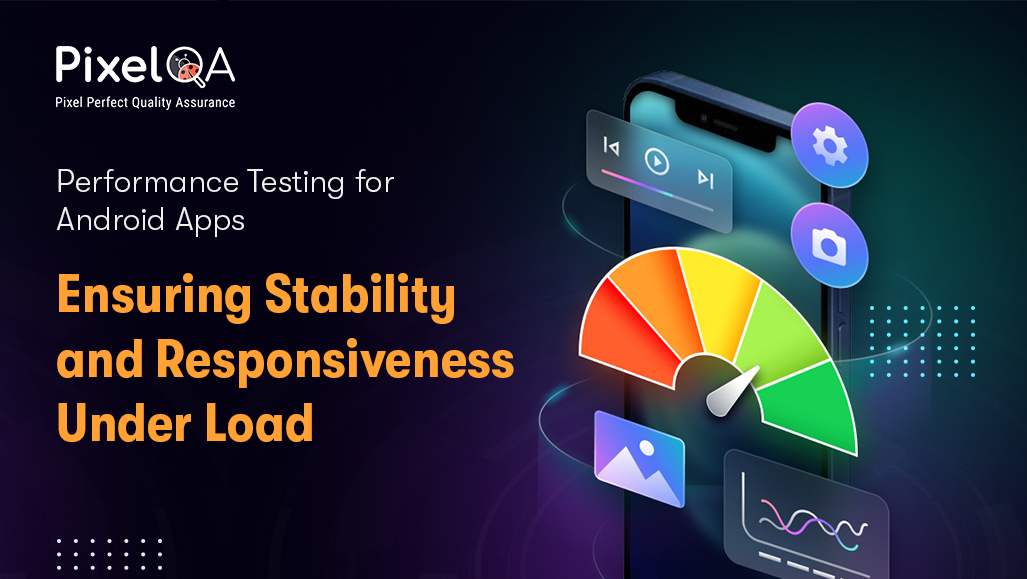
In the current era, users expect mobile apps to be more responsive, fast, and smooth. If an app takes too much time to open or crashes when multiple people use it, users will likely uninstall it. That’s why performance testing services is very important especially for Android apps, which are used by millions across different devices and networks.
In this blog, we’ll explain what performance testing is, why it matters, and how you can do it effectively for Android apps.
Table of Content
- What is Performance Testing?
- Why Performance Testing is Important for Android Apps
- Types of Performance Tests for Android Apps
- Tools for Performance Testing Android Apps
- Best Practices
- What to Measure During Performance Testing
- Conclusion
What is Performance testing?
Performance testing checks whether Android app works when many users use it at the same time or when the device is under stress, like low memory and slow connection of Internet. It answers questions like:
- Does the app load quickly?
- Does it work well when many users use it at once?
- Does it crash when the phone's memory or battery is low?
- Can it handle slow or weak internet connections?
Why Performance Testing is Important for Android Apps
Here are some important reasons why performance testing is crucial:
1. Device compatibility: Android phones come in many sizes and power levels. Your app needs to work well on all of them.
2. Handling Real-World Conditions: In real life, users may have slow networks, low battery, or lots of background apps running. Your app should still work well.
Types of Performance Tests for Android Apps
Here are the most common types of performance tests:
1. Load Testing
Check how the app behaves when many users use it at once. example: 1000 people placing orders at the same time.
2. Stress Testing
Push the app beyond its normal limits to see when it breaks. This helps find its breaking point and how it recovers.
3. Spike Testing
Suddenly increase the number of users to see how the app reacts to sudden traffic spikes.
4. Endurance Testing
Run the app for a long time to check if it slows down, crashes, or uses too much memory.
5. Network Testing
Simulate different internet speeds (3G, 4G, Wi-Fi) and interruptions to see how the app performs.
Tools for Performance Testing Android Apps
Here are some tools commonly used for testing Android app performance:
- Android Profiler (in Android Studio): Monitors CPU, memory, and network usage.
- JMeter: For load and stress testing backend services.
- Firebase Performance Monitoring: Tracks real-time app performance.
- Monkey Runner / UI Automator: For automated testing of UI under stress.
- Appium: For automated performance testing on Android devices.
Best Practices
Here are some simple but powerful tips for better performance testing:
- Test early and often: Don’t wait until the end of development.
- Use real devices: Emulators are useful, but real devices give more accurate results.
- Test under different conditions: try low battery, slow internet, and multitasking scenarios.
- Monitor key metrics: keep an eye on CPU usage, memory, battery drain, and app start time.
- Automate where possible: Automation helps run regular tests easily.
What to Measure During Performance Testing
Here are some important things to check:
- App launch time: How long does it take to open?
- Screen response time: How fast does it react to taps and swipes?
- Memory usage: Is it using too much RAM?
- Battery usage: Does it drain the battery quickly?
- Network usage: Is it using too much data?
Conclusion
The performance testing for the mobile app is important to the app's success and is more than just a task to cross off the development checklist. Everything from ensuring fast response times and preventing crashes to confirming backend performance and network reliability is covered by exhaustive performance testing, which ensures a flawless user experience.
About Author
Nikul Ghevariya is a dedicated QA Executive at PixelQA a Software Testing Company, evolving from a trainee to a valuable contributor across diverse projects. With ambitious goals, he aspires to master new QA tools, and delve into Automation and API testing, showcasing an unwavering commitment to continuous learning.

_638829861270071365.png)